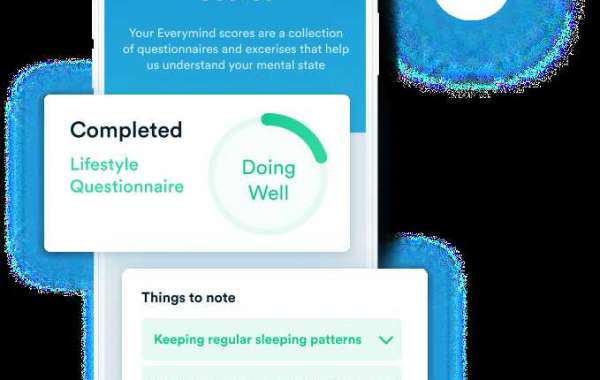Whilst creating features, I am forever looking for information about Workplace Mental Health Programs and subjects appertaining to this.
Undiagnosed workplace depression is a reported driver for low staff-retention rates, toxic morale, decreased productivity, increased absenteeism and presenteeism. Outside the office can prove just as gloomy. Depression damages inter-personal relationships by causing the patient to retreat, cut-off communication with family and loved ones, neglect hygiene as well as adopt unhealthy coping mechanisms. Supporting a colleague who has a mental health problem is about helping them to find ways to recover, helping them to stay well, and ensuring that the workplace is a safe and pleasant place to be, free from discrimination. Attitudes are undoubtedly improving, but stigma when dealing with mental health concerns in the workplace is still prominent. For example, many of the solutions currently on offer require workers to disclose their issues to their employers in order to secure help; it is this lack of privacy and anonymity that can often deter individuals from seeking support. Engagement is about recognising that employees, if they are to perform at their best, must be respected, involved, heard, well-led and valued. Making changes that have a positive impact on employees’ experiences at work are integral. Organisations should provide training for designated staff in the early identification, causes and appropriate management of mental health issues such as anxiety, depression, stress and change management. Mental health describes how a person is feeling and how they cope with everyday life. It's often referred to as mental wellbeing or emotional health. We all have it. 
Some questions that employers can ask about their mental health approach include: How does your organisation manage change and redundancy processes? How well do you involve staff in making decisions about internal changes? How do you look after your own mental wellbeing at work? Interventions and good practices that protect and promote mental health in the workplace include involving employees in decision-making, conveying a feeling of control and participation. Mental ill health can affect all aspects of the workplace. If members of staff are suffering, the knock-on effect is that employers are losing valuable working days from even more valuable employees. As it stands, mental illness represents up to 23% of the total burden of ill health in the UK, making it the largest single cause of illness. A Mental Health and Work document commissioned by the cross-government Health Work and Wellbeing Programme reviews health-related factors that influence working life in Great Britain. Through the efforts of many advocates, organizations, researchers, and brave patients, we have gained an understanding of how to helpfully treat mental illness. Discussing ideas such as workplace wellbeing ideas is good for the staff and the organisation as a whole.
Reasonable Adjustments
Employers must look towards preventative solutions – available to employees at every level – rather than only dealing with present issues impacting staff. Building a resilient work team is an important part of creating a healthy and productive work environment. Resilient teams are based on mutual trust, social norms, participation and social networks. Resilient teams are also more likely to be productive and high performing. Total employer costs of mental health disorders is often underestimated because both direct and indirect medical costs contribute to the overall financial burden. Direct costs are “visible” costs that comprise medical claims and pharmacy costs, whereas indirect costs such absenteeism, presenteeism and work disability are more difficult to accurately quantify and are "invisible" in that these costs are not included in financial statements. By addressing mental health issues, businesses can improve the general wellbeing of employees, reduce absenteeism and presenteeism, lower staff turnover and increase productivity. The annual cost of mental health to employers is staggering. The Independent Review of Mental Health and Employers reports that it’s as much as £42 billion a year. So if you make an effort to boost individual mental wellbeing, how much would you be set to save per employee, per year? Don't forget to send out proper internal communications around how to manage an employee with anxiety in your organisation.
Organisations need to communicate the benefits of a healthy workplace to line managers, who are typically responsible for implementing people management and wellbeing policies. They need to work closely with all areas of the business and provide practical guidance to ensure that policies and practices are implemented consistently and with compassion. An employee assistance programme is an employer-paid scheme that lets employees contact an independent adviser on a confidential basis. This is normally so employees can discuss issues that may be troubling them – such as financial worries, problems with their mental health, or concerns about their employment. Good mental health should be a priority for any business, and implementing it needs to involve more than just the HR department. It’s vital to get buy-in from senior leadership and make sure conversations about mental health and wellbeing happen at board level. Training managers to recognise mental health problems and support staff will help maintain employee wellbeing. Managers can spot the signs by being alert to the potential triggers, such as long hours and no breaks, unrealistic expectations or deadlines and high-pressure environments. Workplace stress is incredibly common, so it’s super-important that you nip it in the bud before it gets serious. Similarly to any change that happens within organizations, discussions around workplace wellbeing support need planning and implementing properly.
Performance Pressure
Poor mental health leads to demotivation and lack of focus. When we have mental health issues, our minds wander or fixate on our problems, making it difficult to regulate our thoughts and emotions. An EAP is a benefit programme intended to help employees deal with personal problems that might adversely impact their job performance, health, and wellbeing. This includes issues such as relationship problems, money worries and other pressures. Support is available 24 hours a day, seven days a week, by telephone, although increasingly EAP providers are also providing their services through the internet. Mental wellness is worth the investment. For every $1 put into treatment for common mental disorders, there is an ROI of $4 in improved health and productivity (source: WHO). The changing working environment has posed an increasing challenge for employers who are looking to support their teams. Limited in-person contact between managers and employees has made building trusting relationships more difficult, and can also make spotting the signs of struggle harder. No matter where or how you work, there’s one thing every job has in common: stress. Whether you’re an employee or a business owner, work-related stress is the most major source of stress for American adults. According to a 2020 Mental Health America survey, nearly 83% of Americans feel stressed or emotionally drained from work. Another 85% say that workplace stress affects their overall mental health. Communication that emphasizes that leadership cares about concepts such as employers duty of care mental health should be welcomed in the working environment.
The best way to look after your employees is by taking care of their mental, physical and emotional health – by making wellness your business asset protection plan, if you like. And, as part of that plan, promoting simple, behavioural habits that will make a real difference to how your employees feel. Interventions and good practices that protect and promote mental health in the workplace include organizational practices that support a healthy work-life balance. It can be hard to talk about feelings at work. If you have colleagues you can talk to, or a manager who asks how you are at supervision sessions, it can really help. Identify someone you feel comfortable with and who will be supportive. You may want to think about what you want to disclose, who to and when a good time and place to do this could be. The boundaries between work life and home life have become increasingly blurred with the significant shift to home working. This needs to be monitored carefully, as a poor work-life balance is a shortcut to stressed and burned out employees. Employees with mental health conditions can be supported to be productive at work by considering the inherent requirements of the job, individual skills, capability and personal circumstances and making reasonable adjustments to support people to perform the role. For employers not investing in wellbeing initiatives, managing employees with mental health issues can be a difficult notion to comprehend.
Growth Development
One of the easiest first steps towards improving the mental health of your workforce is to discuss with them issues that might affect their wellbeing. These may or may not be purely work related. For example, sometimes people don't know that making healthy choices, like eating a balanced diet, taking exercise and having a sensible work-life balance, can protect their mental health in the same way that it does their physical health. Your employer needs to ensure that, as far as possible, the requirements that it places upon you are clear and compatible and that you have the information you need to understand your role and responsibilities. Larger employers can and should increase transparency and accountability through internal and external reporting, to include a leadership commitment and outline of the organisation’s approach to mental health. One can uncover additional insights relating to Workplace Mental Health Programs at this Health and Safety Executive page.














